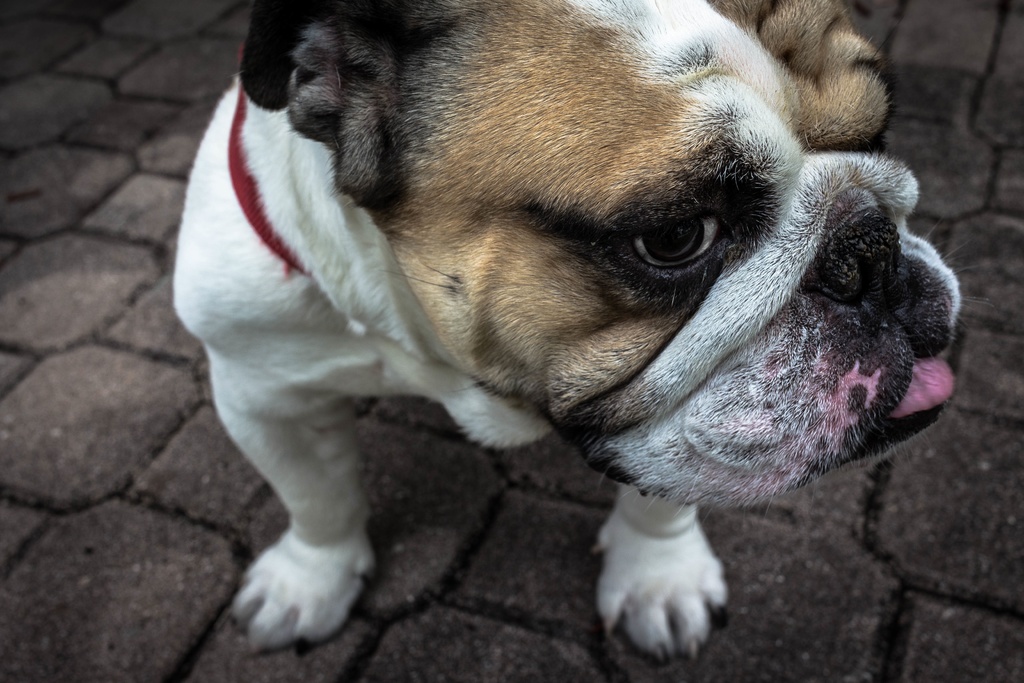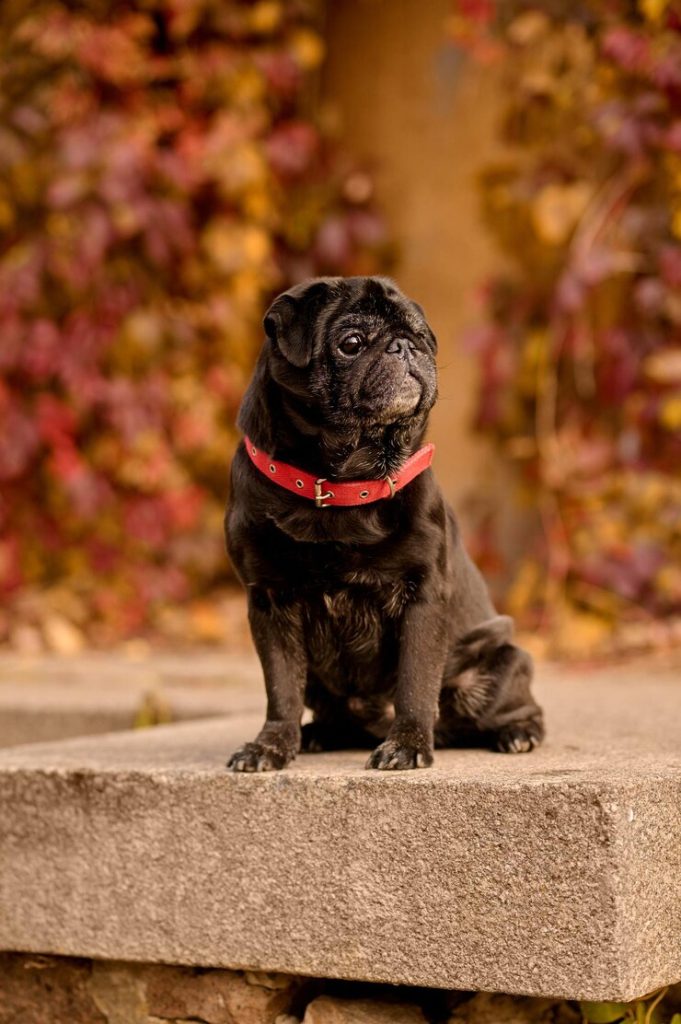With their distinctive appearance and charming personalities, Bulldogs are a beloved breed. However, their unique characteristics also present specific training challenges and requirements. This section of the article will introduce the concept of English bulldog training, emphasizing the breed’s characteristics and the importance of early and consistent training efforts.

Understanding Bulldog Characteristics
Bulldogs are known for their loyalty but have a stubborn streak. This part will delve into dogs’ physical and temperamental traits, explaining how these can influence their training process.
Importance of Early and Consistent Training
Early training is crucial for bulldogs to ensure they grow into well-behaved adults. This subsection will discuss why consistency is vital in training, highlighting how it can positively impact a bulldog’s behavior throughout its life.
Steps To Train a Bulldog
Training a dog requires patience, consistency, and understanding of the breed’s needs. This section will cover the fundamental steps in dog training, including crate training, house training, and basic obedience.
Crate Training Your Bulldog
Crate training is essential in providing a safe and secure environment for your bulldog. It not only aids in-house training but also gives your dog a personal space. Critical steps in crate training include:
- Choosing the Right Crate: Select a large crate for your dog to stand, turn around, and lie comfortably.
- Introducing the Crate: Gradually introduce your dog to the crate. Start with short periods and gradually increase the time.
- Making the Crate Comfortable: Place comfortable bedding and favorite toys inside to make it inviting.
- Crate Training Schedule: Establish a routine for your bulldog to spend time in the crate, especially after meals and at night.
House Training Your Bulldog
House training is crucial for a harmonious living environment. The process involves:
- Regular Schedule: Feed your bulldog at the exact times daily and promptly take them outside to eliminate.
- Designated Bathroom Area: Choose a specific area outside for your bulldog to use as their bathroom.
- Positive Reinforcement: Praise and reward your bulldog immediately after they are eliminated outside.
- Accident Management: If an accident happens indoors, clean it up without punishment and reinforce the outdoor bathroom habit.
Basic Obedience Training for Bulldogs
Teaching basic commands is vital for your bulldog’s safety and ease of handling. Essential commands include:
- Sit: Teach your bulldog to sit on command. This is often the first command taught, forming the basis for more advanced training.
- Stay: Instruct your bulldog to stay in a particular spot until released. This command is crucial for their safety in various situations.
- Come: Training your bulldog to come when called ensures you can recall them in potentially dangerous or distracting environments.
- Heel: Teaching your bulldog to walk calmly beside you, without pulling, is essential for enjoyable walks.
Given the bulldog’s temperament, these training steps should be approached with patience and consistency. With the right approach, bulldogs can be trained effectively to be well-mannered and obedient pets.
Bulldog Puppy Training Essentials

Training puppy of this breed requires a focus on socialization, potty training, and bite inhibition. These early training steps are crucial for developing a well-adjusted adult bulldog.
Socializing Your Puppy Bulldog
Socialization exposes your bulldog pup to various people, animals, environments, and experiences. Proper socialization can significantly impact their behavior and temperament. Key steps include:
- Exposure to Different People and Environments: Introduce your pup to different types of people and environments to enhance their adaptability.
- Positive Experiences: Ensure that each new experience is positive. Use treats and praises to associate new encounters with good feelings.
- Controlled Interactions: Monitor all interactions with other dogs and people to ensure they are safe and positive.
- Gradual Introduction: Avoid overwhelming your puppy; introduce new experiences gradually.
Potty Training Fundamentals
Potty training is one of the first and most essential tasks in pup training. The process should be consistent and patient, involving:
- Regular Bathroom Breaks: Take your pup outside frequently, especially after meals, playtime, and naps.
- Consistent Spot: Choose a spot for your puppy to do their business outside.
- Crate Training: Utilize crate training as part of the potty training process to teach bladder control.
- Reward and Praise: Immediately reward your pup with treats and praise when they go potty in the right place.
Managing and Moderating Biting Behavior
Puppy biting is normal but should be managed effectively. Training your canine puppy to moderate their biting includes:
- Redirecting to Toys: When your puppy starts to bite, redirect their attention to a toy or chew bone.
- Yelp and Withdraw: If your puppy bites too hard, let out a yelp and withdraw your attention to teach them that biting ends playtime.
- Consistent Response: Ensure everyone in the household responds consistently to biting behavior.
- Bite Inhibition Training: Teach your pup to control the force of their bite through gentle play.
Training a bulldog pup requires patience and consistency. The efforts put into training during these early stages will shape their behavior and temperament as they grow.
Advanced Training Techniques
Once the basics are mastered, bulldog owners can progress to more advanced training techniques. These methods help refine your bulldog’s behavior and obedience, making them well-rounded and adaptable pets.
Positive Reinforcement Methods
Positive reinforcement is key in advanced training. It involves rewarding desired behaviors to encourage their repetition. Effective strategies include:
- Timing of Rewards: Give treats or praise immediately after the desired behavior to reinforce the connection.
- Variety of Rewards: Use a mix of treats, praise, and playtime as rewards to maintain your bulldog’s motivation.
- Gradual Weaning Off Treats: Slowly reduce the frequency of treats, replacing them with verbal praise and pats to ensure the behavior continues without constant rewards.
Advanced Obedience Commands
Beyond the basic commands, teaching advanced commands can enhance your bulldog’s discipline and agility. Some advanced commands include:
- Leave It: Teach your bulldog to ignore or drop something on command crucial for their safety.
- Wait: Instruct your bulldog to wait at doors or before eating, reinforcing impulse control.
- Roll Over or Play Dead: More complex commands that combine obedience with playful elements.

Behavioral Problem Solving
Addressing specific behavioral issues requires tailored approaches. Key aspects include:
- Identifying Triggers: Understand what triggers undesirable behavior in your bulldog to address it effectively.
- Consistent Correction: Provide consistent and calm corrections when your bulldog exhibits unwanted behavior.
- Professional Assistance: Consult a professional dog trainer for persistent or challenging behaviors.
Advanced training enhances your bulldog’s obedience and strengthens the bond between you and your pet, fostering mutual respect and understanding.
Training Tips for Bulldog Puppies
This section focuses on understanding and effectively training puppies of this breed, emphasizing communication, rewards, and creating a nurturing environment.
Understanding Canine Puppy Behavior
Understanding the behavior of bulldog pups is critical to practical training. This involves recognizing their body language and vocalizations, which reflect their emotional states and needs. For instance, a relaxed posture and wagging tail usually indicate happiness, while a tucked tail and lowered head might signal fear or uncertainty. Recognizing these cues helps in responding appropriately during training.
Effective Communication and Rewards
Effective communication is pivotal in training puppies. It’s not just about verbal commands but also about the tone of voice, body language, and consistency in your messages. Rewards play a vital role here. They don’t always have to be treated; verbal praise, petting, or playtime can also be powerful motivators. The key is immediately rewarding the desired behavior, making a clear association between the action and the positive outcome in the puppy’s mind.
Creating a Safe and Nurturing Environment
A safe and nurturing environment is essential for a puppy’s development. This includes providing a comfortable and secure space, like a crate or designated area in your home, where the English bulldog puppy can retreat and relax. Consistent feeding, walking, and playtime routines help establish a sense of security and structure. Also, ensuring the puppy has positive interactions with family members and is gradually introduced to new experiences will aid their social development.
Special Considerations for Adult Bulldogs
Training adult bulldogs involves unique considerations tailored to their specific needs. Unlike puppies, adult bulldogs may have ingrained habits and behaviors, requiring a different approach in training. This section will cover aspects such as customizing training, the importance of exercise, and socialization strategies.
Tailoring Training to Adult Bulldog Needs
Adult bulldogs often have established behaviors, meaning training might be needed to address and modify these habits. Understanding the bulldog’s history is essential, especially if they are adopted or rescued. This knowledge helps customize training methods to suit their specific background and experiences. Training for adult bulldogs should be patient and respectful, recognizing that change might take time.
Importance of Daily Exercise
Regular exercise is crucial for adult bulldogs, not just for their physical health but also for their mental well-being. Exercise helps manage energy levels, reduce boredom, and prevent behavior problems. A balanced exercise regime for an adult bulldog could include walks, play sessions, and mental stimulation activities like puzzle toys.
Socialization with Other Dogs and Pets
Continued socialization is essential for adult bulldogs to maintain social skills and prevent aggression or fear. This involves regular interactions with other dogs and pets in controlled and safe environments. Positive experiences in these interactions are crucial to foster good social behavior.
To summarize these fundamental considerations, here’s a table outlining the main points:
| Aspect | Critical Considerations for Adult Bulldogs |
| Tailored Training | Address established behaviors and customize methods based on the bulldog’s history and experiences. |
| Daily Exercise | Include walks, play sessions, and mental stimulation to manage energy levels and prevent behavior problems. |
| Ongoing Socialization | Regular, positive interactions with other dogs and pets in controlled environments to maintain social skills and prevent aggression. |
General Bulldog Training Tips

Specific universal tips can be applied when training bulldogs, regardless of the dog’s age or training stage. These general guidelines help ensure a successful and enjoyable training experience.
Safety and Health Awareness
It’s essential to keep safety and health considerations in mind during training:
- Regular Health Check-Ups: Ensure your bulldog is healthy before starting any training program. Health issues can affect their behavior and ability to learn.
- Safe Training Environment: Create a training environment free from hazards. This includes a safe, enclosed space for outdoor training.
- Heat Sensitivity: Bulldogs are susceptible to heat. Avoid strenuous training in hot weather and ensure they have access to water and shade.
Consistency in Training Approach
Consistency is vital in all aspects of bulldog training:
- Regular Schedule: Maintain a regular schedule for feeding, potty breaks, exercise, and training sessions.
- Consistent Commands: Use the exact words and gestures for each command. This helps your bulldog understand and respond more effectively.
- Unified Household Approach: Ensure all family members use the same commands and training techniques to avoid confusing your bulldog.
Understanding English Bulldog Health Issues
Awareness of breed-specific health issues is essential:
- Breathing Issues: Be mindful of your bulldog’s breathing, especially during exercise, due to their brachycephalic nature.
- Joint Health: Bulldogs are prone to joint issues. Keep training sessions low-impact and monitor for signs of discomfort or pain.
- Weight Management: Maintain a healthy weight through a balanced diet and regular exercise to prevent health complications.
By adhering to these general training tips, owners can create a positive, effective, and safe training environment for their bulldogs.
Final Thoughts on Bulldog Training
Start training, whether a puppy or an adult, is a rewarding journey that strengthens the bond between the dog and its owner. Throughout this process, it’s important to remember that each bulldog has its personality and may respond differently to various training techniques. Patience, consistency, and understanding are key to successfully training your bulldog. Emphasizing positive reinforcement and tailoring the training to your bulldog’s unique needs will yield the best results.

It’s also crucial to remember that training is an ongoing process. Bulldogs, known for their stubbornness, may require repeated reinforcement of commands and behaviors throughout their lives. Keeping training sessions enjoyable and engaging will help maintain your bulldog’s interest and enthusiasm for learning.
Conclusion
In conclusion, bulldog training encompasses a range of techniques and considerations, from basic obedience to addressing breed-specific traits and health issues. By understanding and respecting the unique characteristics of bulldogs, owners can effectively train their pets to be well-behaved, friendly, and happy companions. The key lies in commitment, understanding, and a positive approach to training. With these tools, bulldog owners can enjoy a fulfilling and lasting relationship with their four-legged friends.
